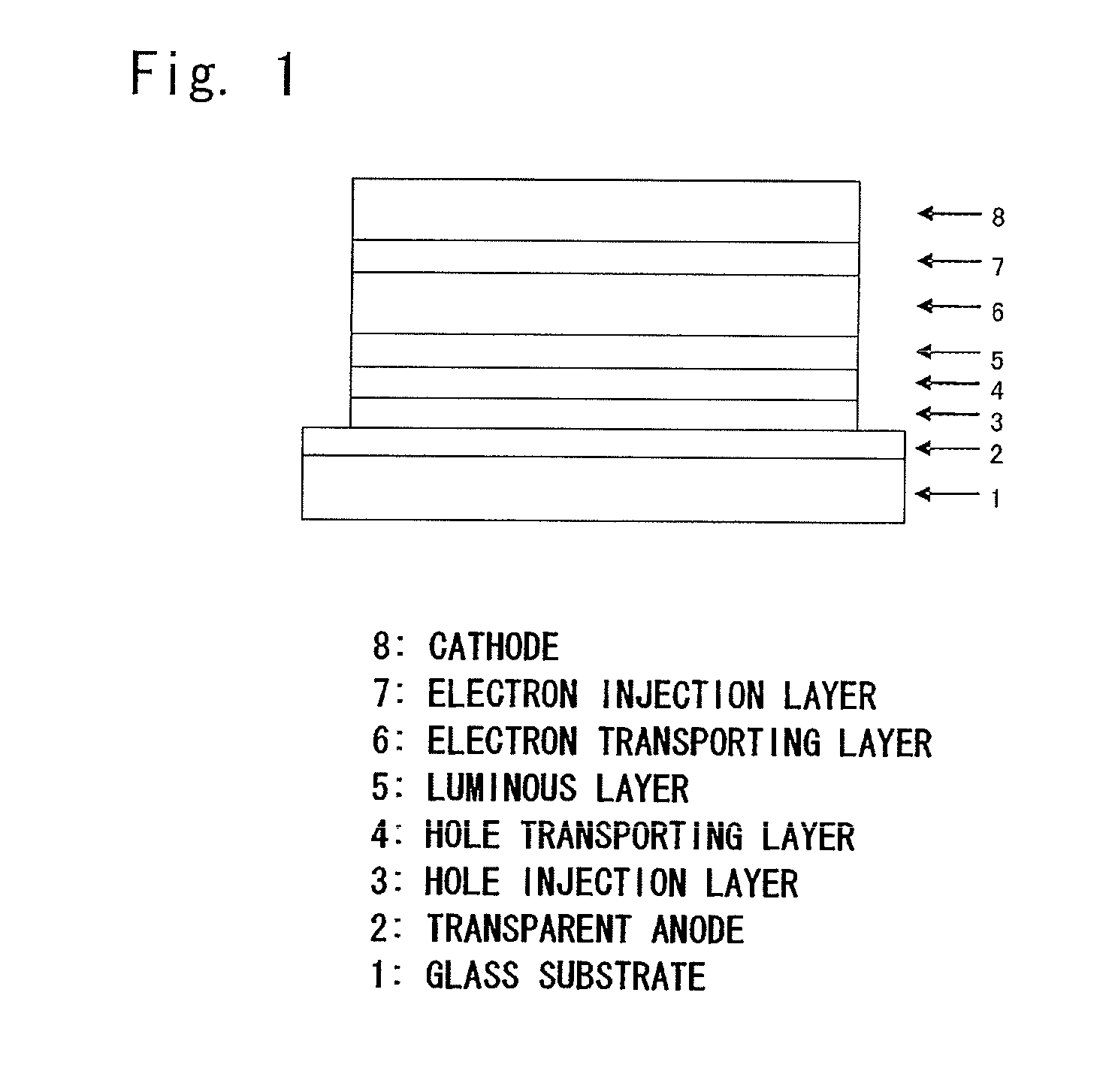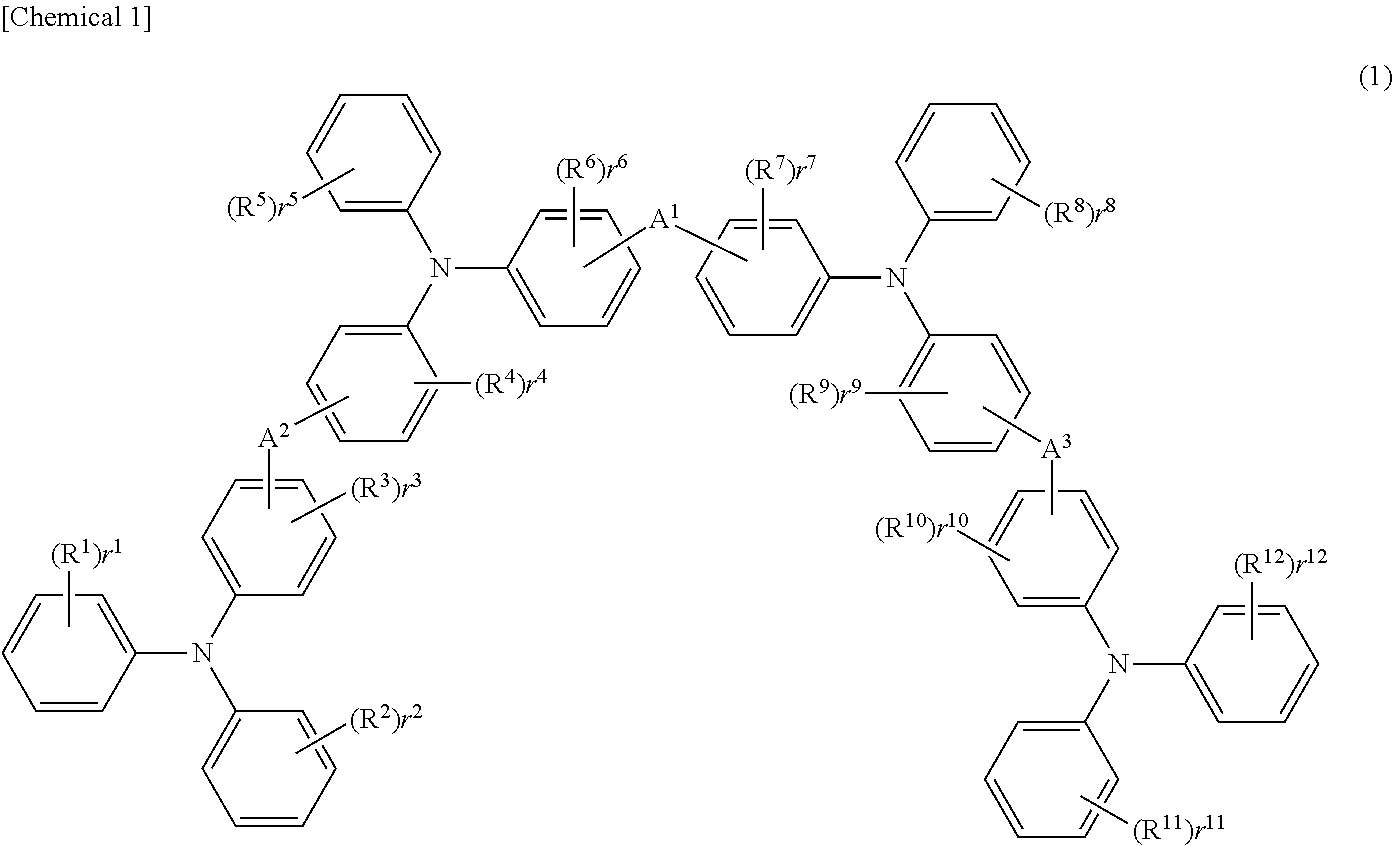Organic electroluminescent device
- Summary
- Abstract
- Description
- Claims
- Application Information
AI Technical Summary
Benefits of technology
Problems solved by technology
Method used
Image
Examples
example 1
[0108]An organic EL device of a structure shown in FIG. 1 was fabricated according to the procedure described below. Namely, the organic EL device has a structure in which a transparent anode 2 (ITO electrode), a hole injection layer 3, a hole-transporting layer 4, a luminous layer 5, an electron-transporting layer 6, an electron injection layer 7 and a cathode (aluminum electrode) 8 are formed by vacuum evaporation in this order on a glass substrate 1.
[0109]First, the glass substrate 1 on which the ITO (indium tin oxide) film has been formed in a thickness of 150 nm was washed with ultrasonic waves in an isopropyl alcohol for 20 minutes and was, thereafter, dried on a hot plate heated at 200° C. for 10 minutes followed by a treatment with UV ozone for 5 minutes. Thereafter, the glass substrate with ITO was placed in a vacuum evaporation machine, and the pressure therein was decreased down to 0.001 Pa or lower.
[0110]Next, the hole injection layer 3 was formed in a thickness of 20 nm...
example 2
[0117]An organic EL device was fabricated under the same conditions as in Example 1 but forming the hole-transporting layer 4 in a thickness of 40 nm by the two-way vacuum evaporation by using the above compound (1-1) and the compound (2-1) at such deposition rates that the weight ratio thereof was 10:90.
[0118]The thus fabricated organic EL device was measured for its properties in the atmosphere at normal temperature. Table 1 summarizes the measured results of luminous properties of when a DC voltage was applied to the organic EL device.
example 3
[0119]An organic EL device was fabricated under the same conditions as in Example 1 but forming the hole-transporting layer 4 in a thickness of 40 nm by the two-way vacuum evaporation by using the above compound (1-1) and the compound (2-1) at such deposition rates that the weight ratio thereof was 40:60.
[0120]The thus fabricated organic EL device was measured for its properties in the atmosphere at normal temperature. Table 1 summarizes the measured results of luminous properties of when a DC voltage was applied to the organic EL device.
PUM
 Login to View More
Login to View More Abstract
Description
Claims
Application Information
 Login to View More
Login to View More - R&D
- Intellectual Property
- Life Sciences
- Materials
- Tech Scout
- Unparalleled Data Quality
- Higher Quality Content
- 60% Fewer Hallucinations
Browse by: Latest US Patents, China's latest patents, Technical Efficacy Thesaurus, Application Domain, Technology Topic, Popular Technical Reports.
© 2025 PatSnap. All rights reserved.Legal|Privacy policy|Modern Slavery Act Transparency Statement|Sitemap|About US| Contact US: help@patsnap.com



